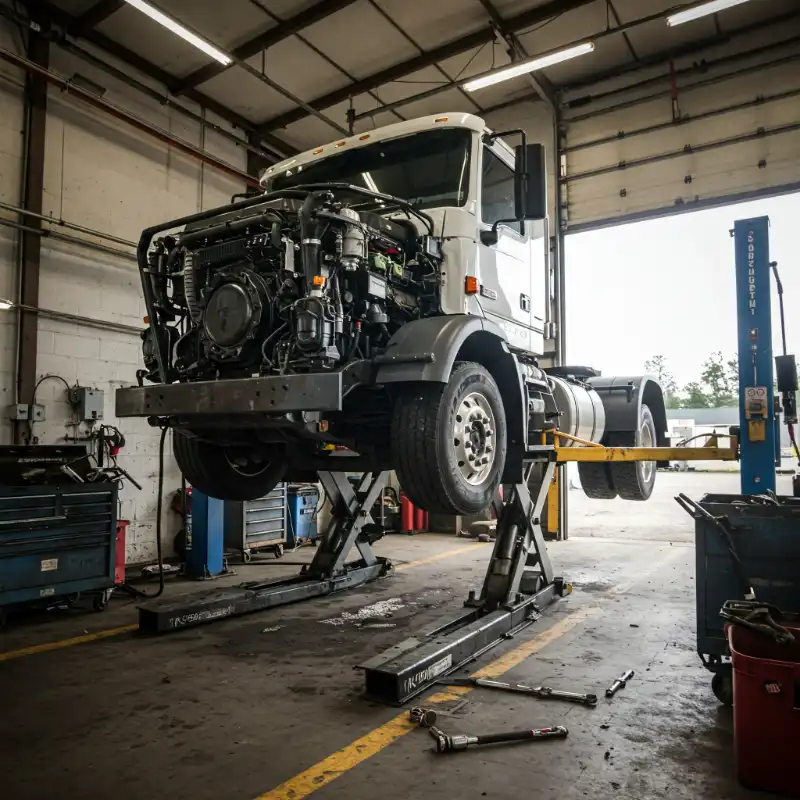Essential Maintenance Checklist For Keeping Your Fleet Trucks In Top Shape
Ensuring that your fleet of trucks are in top shape is paramount. In this guide, we will discuss fleet maintenance and truck repairs, covering the essential checkpoints that keep your fleet rolling smoothly.
1. Regular Inspections
Conducting regular inspections is the base of fleet maintenance. These inspections help you identify and address potential issues before they escalate.
Routine Visual Inspections: Before driving, start with a visual examination of your trucks. Look for any visible issues, damage, or irregularities, including fluid leaks, loose parts, or warning lights on the dashboard. A keen eye for detail can uncover early indicators of potential problems and avert larger maintenance issues down the road.
Comprehensive Inspections: In addition to visual checks, it is crucial to schedule comprehensive inspections at specified intervals. These evaluations encompass all aspects of your vehicle, from the engine to the suspension. Such assessments provide a deeper insight into the overall condition of your trucks, ensuring that all components are operating optimally.
2. Fluids and Lubrication
To keep your fleet running like a well-oiled machine, paying attention to fluids and lubrication is vital.
Engine Oil, Transmission Fluid, and Coolant: Regularly monitoring and changing engine oil, transmission fluid, and coolant at recommended intervals is non-negotiable. Using the right type and quality of fluids is essential to maintain peak performance and prevent premature wear and tear in your fleet.
Lubrication of Essential Components: Adequate lubrication of crucial components, such as bearings and suspension parts, is imperative for prolonging the lifespan of your fleet. A well-lubricated fleet operates seamlessly, reducing friction and minimizing wear and tear.
3. Tire Maintenance
Your trucks' tires are the literal point of contact with the road, making their maintenance paramount for both safety and efficiency.
Tire Pressure: Regularly checking and maintaining proper tire pressure is essential. Under-inflated or over-inflated tires can lead to reduced fuel efficiency, uneven wear, and even potential blowouts. Proper tire pressure ensures safety and extends the life of your tires.
Rotation and Balancing: To maximize tire lifespan and maintain even wear, follow the recommended schedule for tire rotation and balancing. Inspecting your tires for signs of wear, including tread depth and sidewall condition, will keep your fleet rolling smoothly.
4. Brake System
The brake system serves as the lifeline of your fleet, ensuring the safety of your drivers and the public.
Brake Pads: Brake pads act as your truck's safety net. Regularly inspect and replace them when needed, as worn-out brake pads lead to longer stopping distances and an increased risk of accidents. Safety isn't a luxury – it's an absolute necessity.
Hose and Line Check: Regularly checking your hoses for leaks, cracks, or damage is crucial. A well-maintained braking system guarantees that your trucks respond promptly when you need them to stop, minimizing the risk of accidents and costly repairs.
5. Electrical System
The electrical system is the heart of your fleet, responsible for starting the engine and ensuring the safety and functionality of your trucks.
Battery and Lights: Regularly testing the battery ensures it is in good condition and can reliably power your truck's electrical systems. Equally important is the functionality of all lights, including headlights, taillights, and indicators. Proper lighting is not just about your visibility; it's about the safety of other road users.
6. Coolant System
An efficient cooling system is crucial to prevent engine overheating, which can lead to extensive damage and costly repairs.
Radiator and Cooling Fan: Regularly inspect the radiator and cooling fan for signs of wear, damage, or blockages. Changing the coolant at recommended intervals is essential to maintain the cooling system's efficiency. A properly cooled engine is not only more efficient but also significantly less likely to experience catastrophic breakdowns.
7. Driver Training and Record Keeping
Equipping your drivers with the right knowledge and maintaining meticulous records is essential for proactive fleet maintenance.
Driver Training: Educate your drivers on pre and post-trip inspections. A well-informed driver can spot issues early, report them promptly, and prevent minor concerns from escalating into major problems.
Maintenance Records: Detailed records of each truck's maintenance history are invaluable. They provide a roadmap of past issues and solutions, allowing you to anticipate future needs, track expenses, and ensure the longevity and reliability of your fleet.
8. Safety Equipment and Compliance
Ensuring safety equipment is up-to-date and complying with local, state, and federal regulations is a legal and ethical duty.
Safety Equipment: Keep all safety equipment, including fire extinguishers and first-aid kits, in prime condition and readily accessible to your drivers. In emergencies, these tools can be lifesavers, minimizing risks to your drivers and others on the road.
Regulatory Compliance: Stay well-informed and updated on local, state, and federal regulations related to vehicle maintenance and safety. Compliance not only avoids penalties but also enhances your company's reputation and contributes to the overall safety of the industry.
Conclusion
Maintaining your fleet of trucks is a multifaceted task, combining regular inspections, meticulous record-keeping, and a commitment to safety and compliance. By adhering to this essential maintenance checklist, you're not only extending the lifespan of your fleet but also enhancing driver safety, reducing downtime, and improving overall operational efficiency. Remember, an investment in truck maintenance is an investment in the success of your business. Embrace the checklist, take proactive measures, and keep your fleet running smoothly for years to come.
To learn more about our fleet maintenance services, click here.










.webp)





























